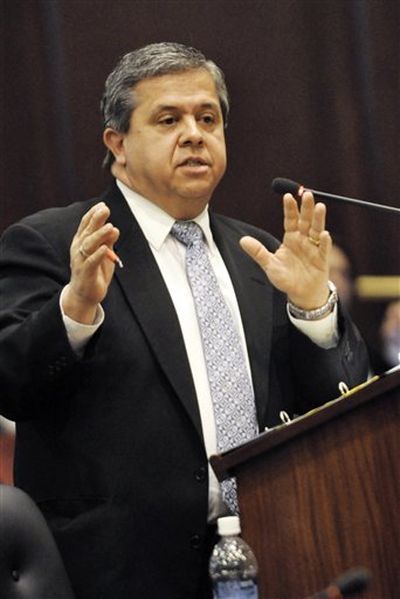Board OKs Idaho plan to ditch federal education goals

BOISE — The state Board of Education signed off on Idaho’s plan to reject the latest requirements for determining student progress under the federal No Child Left Behind law, though some trustees questioned public schools chief Tom Luna about his timing and motives behind the move.
The board voted 4-2 in a special meeting Friday to approve the plan amid concerns from board member Don Soltman, who noted that Idaho was ditching the higher benchmarks three days before the state’s latest batch of testing results would be released on Monday.
“I guess I don’t like the process; it really bothers me,” said Soltman, who voted against the plan.
The state will continue to release all of the testing data on how schools performed, said Luna, who sits on the state Board of Education. Luna defended the timing of his plan and rejected the notion that Idaho was rejecting the higher benchmarks under No Child Left Behind because more schools would not make adequate yearly progress under the law.
“We’re definitely not doing this to try to gain in the numbers or gain in the results,” he said.
Luna sent a letter to U.S. Secretary of Education Arne Duncan last month saying Idaho would not comply with the latest benchmarks under No Child Left Behind, or sanction schools that do not meet these higher testing goals under the federal law.
Duncan’s agency responded in a letter Wednesday, saying Idaho could maintain its current benchmarks for another year.
Other states, including Montana and South Dakota have also balked at the latest No Child Left Behind requirements, saying the education program sets unrealistic benchmarks for schools. In Idaho, fewer students made adequate progress last year when benchmarks under the law were dramatically increased.
Under the higher benchmarks this year, a school would need 90.4 percent of its students to reach grade-level proficiency in reading to make adequate progress under the law, up from 85.6 percent last year. In math, a school would need 88.7 percent of its students to reach grade-level proficiency to achieve adequate progress, up from 83 percent.
An estimated 150 additional Idaho schools would move into the “needs improvement” category if the benchmarks are increased, Luna said.
No Child Left Behind was passed in 2001 and has been widely panned by critics who say it brands schools as failures even as they make progress. The long-awaited overhaul of the law began earlier this year in the U.S. House, but a comprehensive reform appears far from the finish line.
New Idaho education laws backed by Luna and the governor focus on the academic growth of students and not on whether they can pass a test, Luna said.
The state cannot afford to implement the new education changes and also put money toward schools that will be placed in the “needs improvement” category under No Child Left Behind after benchmarks under the law are increased this year, Luna said.
State board member Rod Lewis supported Luna’s plan to freeze the benchmarks, but said trustees should have been notified before Luna went to the federal government.
“As you can imagine, that creates a little bit of concern at the board level as to how we’re doing business,” Lewis said.